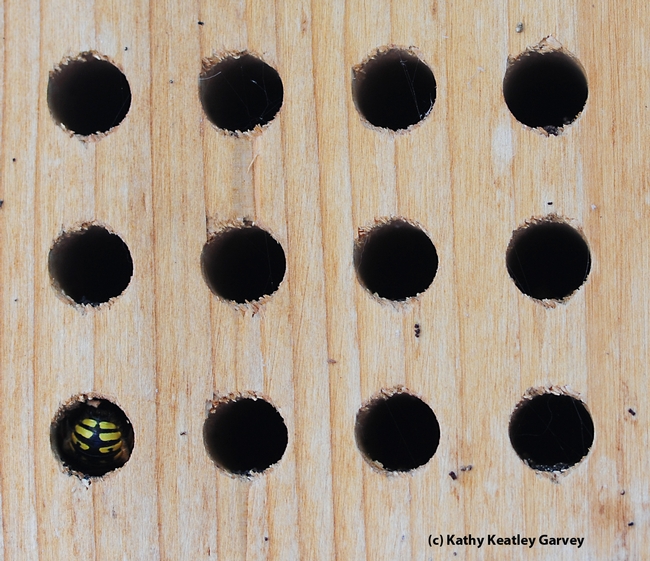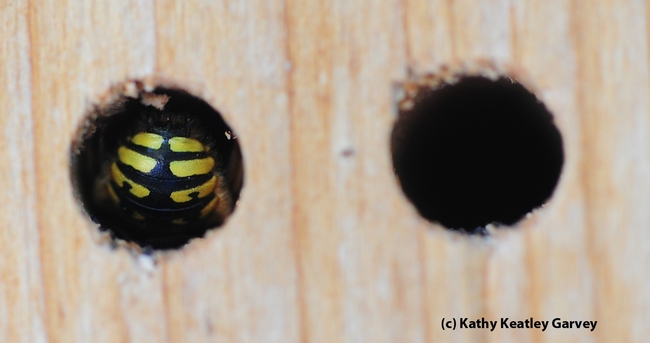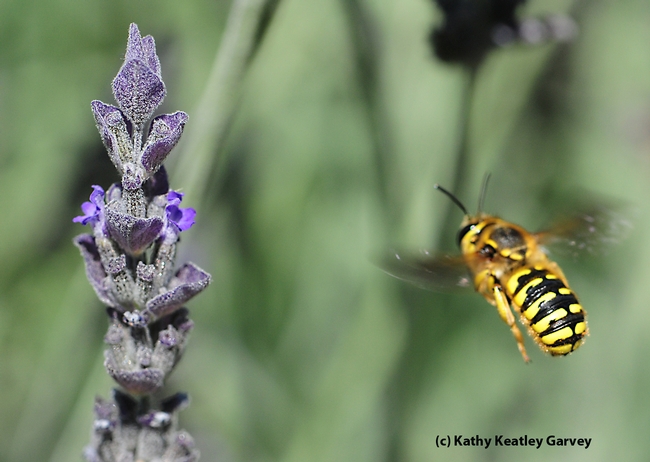During the day, European wool carder bees (so named because the females collect or "card" plant fuzz for their nests) forage on our catmint and lamb's ear.
These bees, Anthidium manicatum, are about the size of a honey bee, but with striking yellow and black markings. From Europe and fairly new to the United States, they became established in New York in 1963, and then began spreading west. Eventually this exotic species made its way to California. Bee scientists first identified it in California (Sunnyvale) in 2007.
"The females nest in convenient cavities such as old beetle holes and hollow stems," according native pollinator specialist Robbin Thorp, emeritus professor entomology at UC Davis. Its plant preferences include lamb’s ear (Stachys byzantine, in the mint family Lamiaceae), a perennial grown for its fuzzy, silvery gray-green foliage.
At night, the females return to their nests. But for the boys, it's the boys' night out.
The "boy bees," as Thorp calls them, "sleep wherever they can."
Every night and early morning, we see a male sleeping inside one of our native bee condos. This particular condo, located several feet above our catmint patch, is drilled with "large" holes to accommodate the blue orchard bee (Osmia), a mason bee. The holes really aren't that large, but they are compared to our bee condo for the smaller leafcutting bees.
For awhile, our mason bee condo drew nothing but earwigs. Not one blue orchard bee (BOB).
Now we have a exotic species sleeping in a native bee condo.
What a treat! At least we have one tenant!
When we took his picture in the early morning, the European wool carder bee didn't budge. Guess he's saving his energy to chase the girls around in the catmint patch.
Attached Images:

This bee condo, meant for blue orchard bees, is attracting a European wool carder bee, Anthidium manicatum. (Photo by Kathy Keatley Garvey)

Close-up of a sleeping European wool carder bee, Anthidium manicatum. (Photo by Kathy Keatley Garvey)

European wool carder bee, Anthidium manicatum, in flight, heading for lavender. (Photo by Kathy Keatley Garvey)